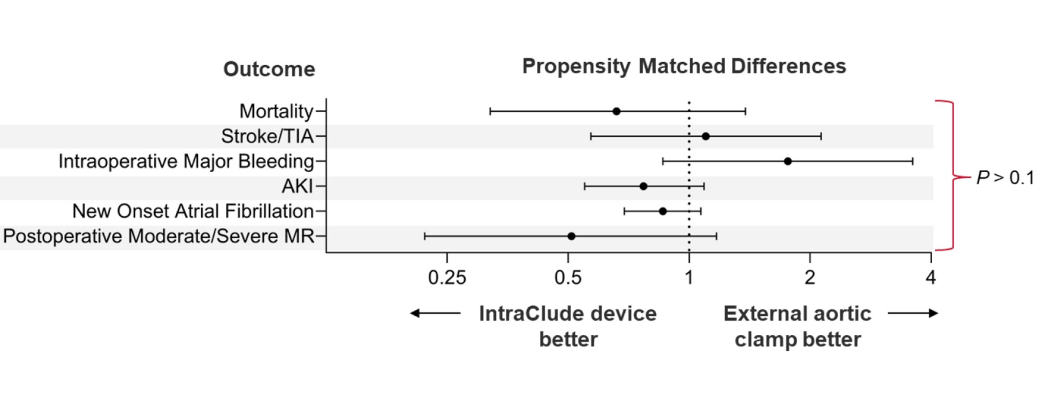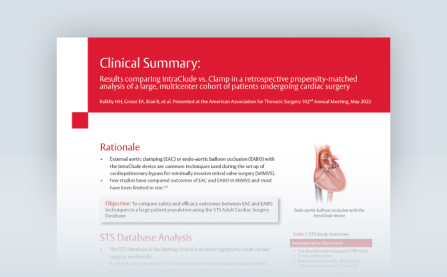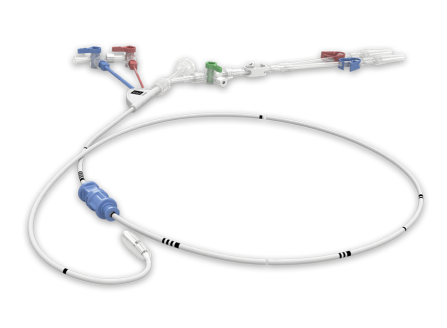Objective
The objective of this study was to compare safety and efficacy outcomes between external aortic clamping (EAC) and endo-aortic balloon occlusion (EABO) techniques in a large patient population using the STS Adult Cardiac Surgery Database.

Results comparing IntraClude device vs. clamp in a retrospective propensity-matched analysis of a large, multicenter cohort of patients undergoing cardiac surgery1
The objective of this study was to compare safety and efficacy outcomes between external aortic clamping (EAC) and endo-aortic balloon occlusion (EABO) techniques in a large patient population using the STS Adult Cardiac Surgery Database.

A cohort was extracted from the STS database consisting of 7,978 patients who underwent isolated MIMVS (repair or replacement) with EAC or EABO after exclusion criteria (7/2017 to 12/2018); a total of 2,326 patients were 1:1 propensity score matched. Intra- and post-operative outcomes were compared using generalized linear modeling and negative binomial or logistic regression.

Compared to the EAC group, the EABO group demonstrated significantly shorter cardiopulmonary bypass times (mean ± std. deviation: 125 ± 53 minutes vs. 134 ± 67 minutes, P = 0.0009) and postoperative length of stay (median (IQR): 4.00(3.00) days vs. 5.00(2.00) days, P < 0.0001). Effectiveness was similar between EABO and EAC, as measured by intraoperative outcomes and postoperative moderate/severe mitral regurgitation.
These results suggest that the endo-aortic balloon was similar to the external aortic clamp in most major outcomes and has potential for greater efficiencies in the operating room and improvements in patient recovery time.

Table 1: EABO and EAC were associated with similar safety and effectiveness

The authors compare outcomes of endo-aortic balloon occlusion (EABO) versus external aortic clamping (EAC) in patients undergoing minimally invasive mitral valve surgery (MIMVS) in the Society of Thoracic Surgeons (STS) Adult Cardiac Surgery Database.
Real-world evidence shows similar hospitalization costs between endo-aortic balloon occlusion and external aortic clamping.
In an analysis of real-world hospital claims from the Premier Healthcare Database, endo-aortic balloon occlusion was associated with:
The IntraClude device is an integrated system to occlude, arrest, and vent the heart in addition to monitoring aortic root pressure.


CAUTION: Federal (United States) law restricts this device to sale by or on the order of a physician. See instructions for use for full prescribing information, including indications, contraindications, warnings, precautions, and adverse events.
We are committed to providing your institution, clinicians and staff with the highest levels of customer service and support to ensure seamless product implementation and ongoing use, including:
24/7 Technical support
For product information and orders